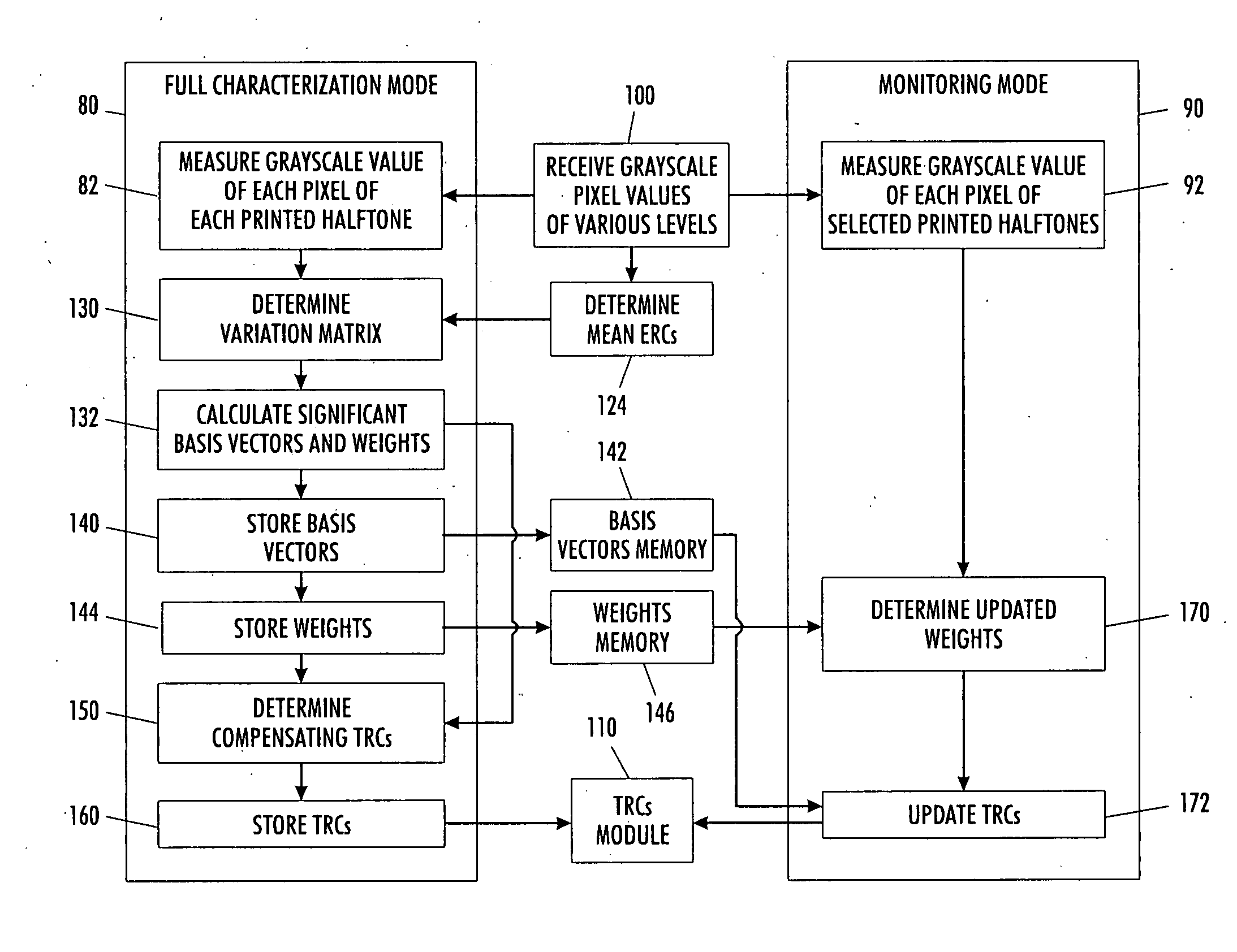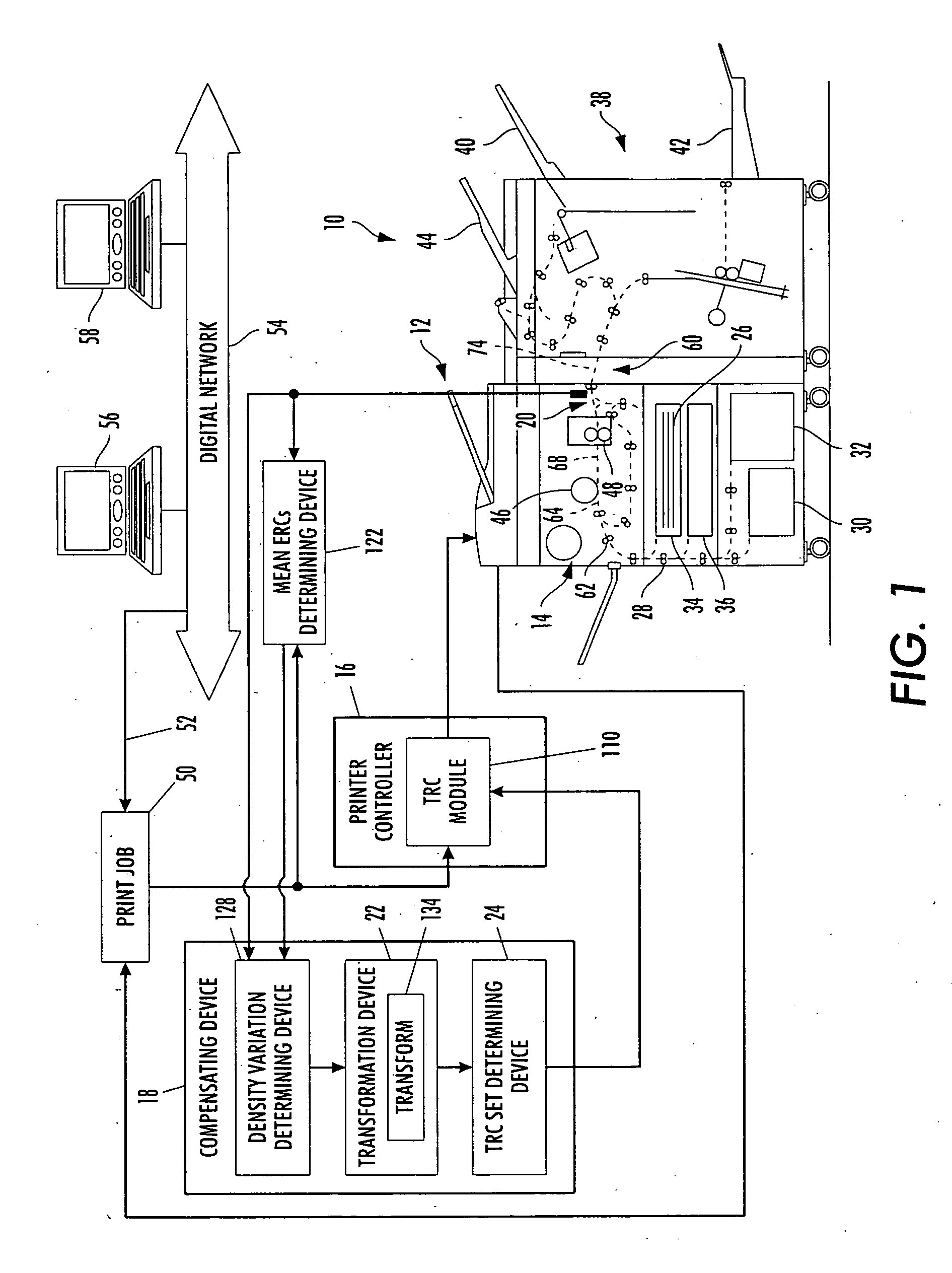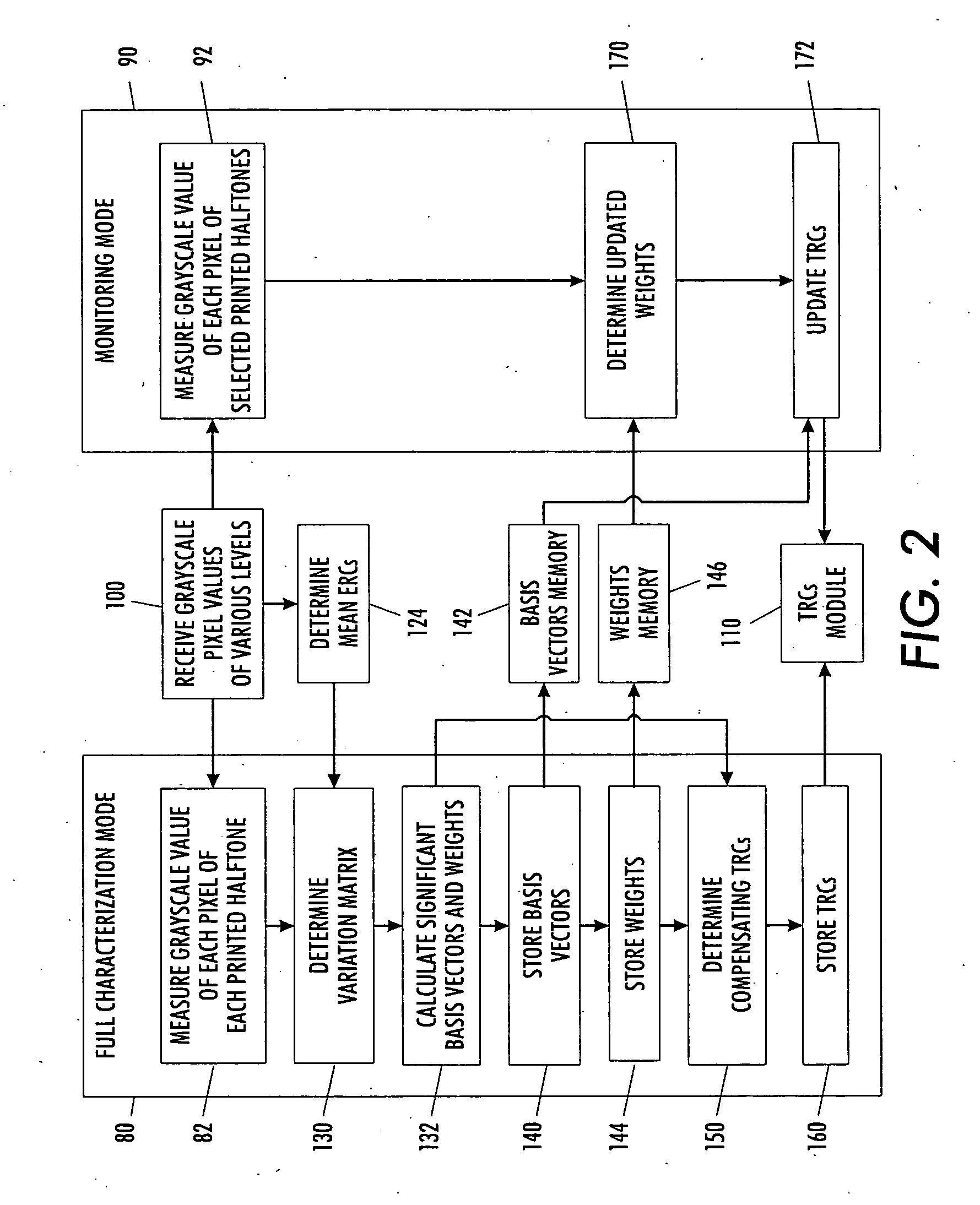Methods and apparatuses for controlling print density
a technology of density and printing method, applied in the field of printing systems, can solve the problems of page-to-page color shift, insufficient compensation for other halftones, and insufficient approach for other halftones,
- Summary
- Abstract
- Description
- Claims
- Application Information
AI Technical Summary
Benefits of technology
Problems solved by technology
Method used
Image
Examples
Embodiment Construction
[0033] With reference to FIG. 1, a printing or document processing system 10 includes an image input device 12 such as a scanner, a printer such as a printing or marking engine or printer 14, and a system controller 16, all interconnected by links. The links can be wired or wireless links or other means capable of supplying electronic data to and / or from the connected elements. Exemplary links include telephone lines, computer cables, ISDN lines, and the like. The image input device 12 may include conversion electronics for converting the image-bearing documents to image signals or pixels or such function may be assumed by the marking engine 14.
[0034] As described in greater detail below, a compensating device or algorithm or processor 18 compensates for non uniformity in print density of the printing system over time and space by taking into consideration that the printer outputs a different density for different sub system or component disturbances. A sensor 20 measures print den...
PUM
 Login to View More
Login to View More Abstract
Description
Claims
Application Information
 Login to View More
Login to View More - R&D
- Intellectual Property
- Life Sciences
- Materials
- Tech Scout
- Unparalleled Data Quality
- Higher Quality Content
- 60% Fewer Hallucinations
Browse by: Latest US Patents, China's latest patents, Technical Efficacy Thesaurus, Application Domain, Technology Topic, Popular Technical Reports.
© 2025 PatSnap. All rights reserved.Legal|Privacy policy|Modern Slavery Act Transparency Statement|Sitemap|About US| Contact US: help@patsnap.com



